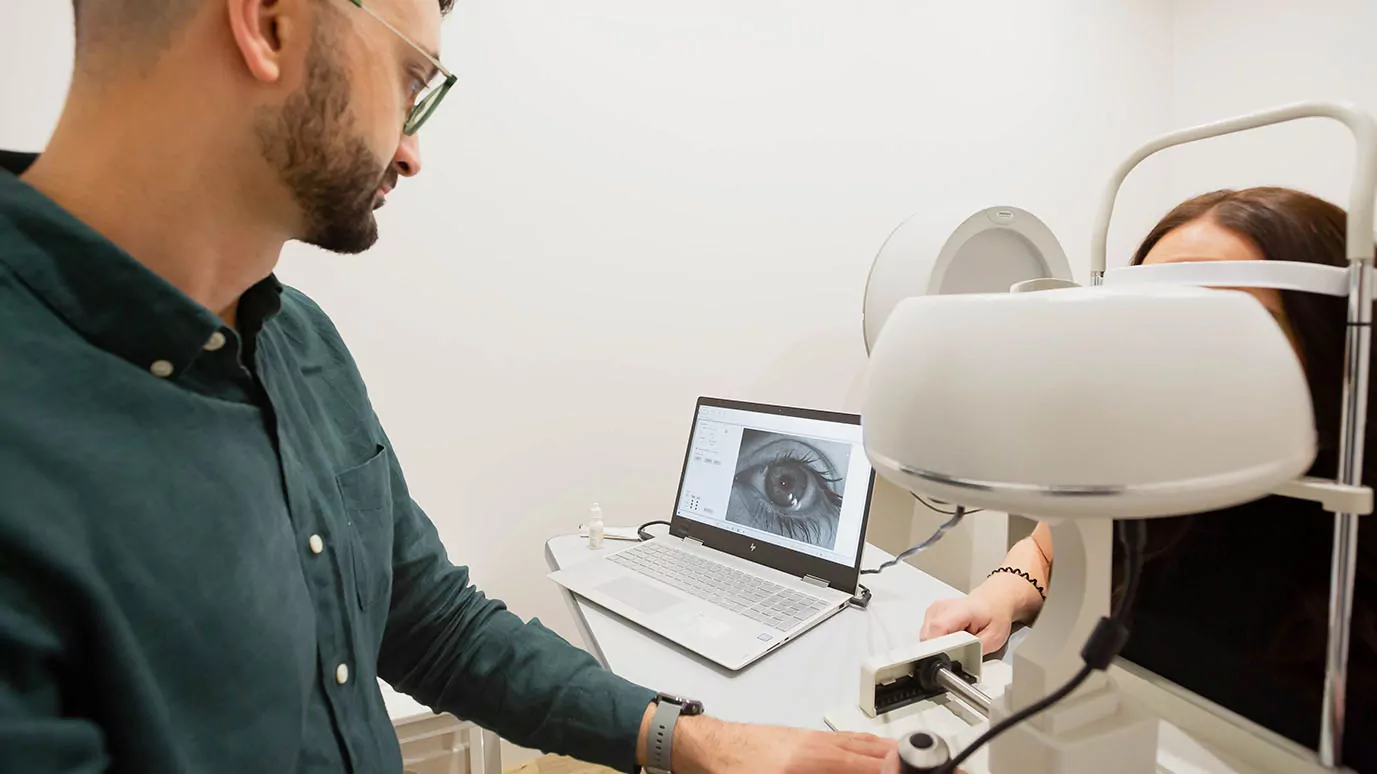At our optometry clinic, we are excited to offer an advanced tool known as the sMap 3D to enhance the precision of scleral lens fittings for our patients.
The sMap 3D is an innovative piece of technology referred to as a scleral topographer, or more technically, a scleral profilometer. This device is distinct from the more commonly encountered corneal topographers, which are a staple in numerous optometry practices for mapping the cornea – the eye's clear front surface.
A conventional corneal topographer provides a detailed image of the cornea, supplying the optometrist with exact measurements across the surface. It generates a detailed, color-coded map where each hue correlates to different curvatures on a reference scale, allowing for precise assessments of the corneal shape.
Corneal topography is crucial, especially for those with corneal irregularities or disorders. It plays a significant role in detecting and managing ocular conditions, providing key details about the eye's surface architecture.
However, standard corneal topography has its limitations as it does not offer insights into the sclera, the white outer layer of the eye. For patients needing specialized contact lenses, especially scleral lenses, information about the sclera is indispensable.
Medical professionals in the contact lens field recognized the need for more detailed scleral measurements. That's where the sMap 3D comes into the picture. By mapping the sclera, the sMap 3D delivers critical data about its curvature, which is instrumental in fitting custom scleral lenses with much greater accuracy.
Patients may exhibit significant astigmatism on the sclera, and while there isn't a direct link established between corneal and scleral astigmatism, ongoing research continues to explore this relationship.
In cases where a patient's scleral shape is highly irregular, conventional scleral lenses might not offer the best fit since they have limited parameter adjustments to accommodate unique scleral topographies. This can lead to suboptimal comfort or effectiveness of the lenses.
The sMap 3D circumvents this issue by providing an unparalleled view of the scleral surface, allowing us to design and fit scleral lenses tailored to the unique contours of your eye, ensuring optimal comfort and vision correction.

What to expect during your sMap scans:
This machine allows us to design a 100% custom contact lens for your eyes akin to designing a glove for your hand, but for your eyes.
To ensure the most accurate assessments during your upcoming visit, we kindly ask that you refrain from wearing any contact lenses on the day of your appointment at bare minimum. This is essential because contact lenses can temporarily modify the contour of your eyes, leading to imprecise readings.
Consider how your skin appears after removing a snug sock; it's often indented and bears impressions from the elastic. Similarly, if you were to create an impression of your foot immediately after removing the sock, it wouldn't be a true representation of its natural shape. After a short period, however, your skin returns to its normal state. The tissues in your eyes are similarly impressionable and need time to return to their natural form without the influence of contact lenses.
During your appointment, a non-invasive, yellow dye will be administered to your eyes. This dye enhances the imaging process by contrasting against your eye's natural color, which allows the machine to capture high-quality images. While you're seated comfortably, you'll be guided to gaze directly into the camera, first holding your lower eyelid steady as your doctor manages the upper eyelid. We'll capture the initial image in this position. Then, by shifting your gaze downward and upward, we'll gather additional images from different angles to obtain a comprehensive view of your eye's shape.
The sMap device promptly processes these images to construct a detailed map of your sclera. This map is crucial for selecting a preliminary scleral lens for fitting. Once the fitting process is complete, the doctor will then determine the precise prescription required for your individual visual needs.
Lastly, the collected scans are sent to our laboratory where advanced software will contribute to the crafting of your personalized scleral lenses. The result? A custom-fitted scleral lens designed for your unique eye structure and vision correction requirements.